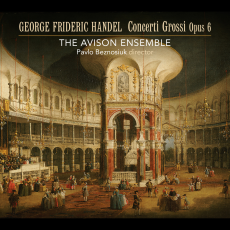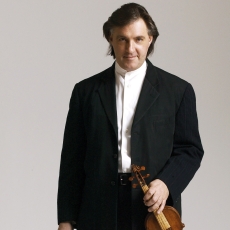The Avsion Ensemble - Handel: Concerti Grossi Opus 6 - Audio Video Club of Atlanta
I like everything I hear about this marvelous Handel release from the Avision Ensemble of Newcastle Upon Tyne, England. Under the leadership of violinist and director Pavlo Beznosiuk, they have emerged as the classiest, most stylish ensemble of their kind since the heyday of Trevor Pinnock's famed English Consort. Their timing is superb, and their firm, clean way of handling a musical line is a thing of beauty. In their hands, George Frideric Handel's rich string harmonies and bold counterpoint are described to perfection. And they treat Handel's dotted rhythms in the opening movements as expertly as anyone does them today.
The work we're talking about is nothing less than Handel's magnificent Concerti Grossi, Opus 6. Handel wrote this set of 12 concerti in a burst of energy in September and October of 1739, his 55th year. While profit was a significant motive (Handel advertised for subscriptions while the work was still in progress), the greater motive was enduring fame. He drew his inspiration from the Opus 6 Concerti of Arcangelo Corelli, preserving their scoring for a concertino of two violins and cello, supported by four-part ripieno strings and continuo, and paying at least lip service to their concerto di chiesa slow-quick-slow-quick formal layout even as he added additional movements of striking dance-inspired character.
That dance element is found in many movements that are not so designated, as well as in the ones that are, such as the languid Musette in Concerto No. 6, the lively Hornpipe in 7, the rather quickly inflected Menuets in 5 and 9, and the achingly beautiful, gently lilting Siciliana in 8. In the process, he actually made a hybrid of the Italian concerto grosso and French suite forms, combining their best features in 12 highly characterized and individualized works. And he used counterpoint and fugue so expertly that we aren't at first aware of it until we step back from the music and approach it in a more objective frame of mind. Most of the time, especially given the wonderful handling of this music by the Avison Ensemble, we aren't inclined to do that. We're too busy just being enchanted. A case in point is the way the final dying phrases by the concerto players are echoed hauntingly by the ripieno in the Adagio of Concerto No. 1, one magical moment among many.


